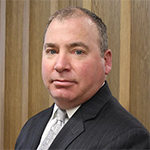NAIOP hosted a regional summit last week in Salt Lake City for members from our Mountain West chapters to discuss the major challenges facing commercial real estate in the region. The summit provided members from Arizona, Colorado, Idaho, Nevada, New Mexico and Utah with an opportunity to have substantive and engaging discussions on major trends and other topics of importance to the industry.
The summit began with NAIOP’s Research Foundation Executive Director Jennifer LeFurgy, Ph.D., providing an overview of current research projects, education programs and outreach activities that support the commercial development community. These research projects have included the annual economic impact of CRE by state and the development approval index of over 100 jurisdictions based on transparency, accountability and consistency.
The next session focused on the challenges in maintaining a resilient supply chain to meet current and future goods movement from warehouses to the consumer. Josh Wood, Chief Executive Officer for the newly formed Supply Chain Council, led the discussion on the fundamental challenges that need to be addressed. These challenges include the need for a reliable national infrastructure plan, reforms to local zoning practices, unachievable indirect source rules, and the introduction in other states of California’s AB 98 legislation, which requires warehouses to be a certain distance from various types of structures deemed “sensitive receptors” and would serve as an effective ban on much warehouse development. Wood also mentioned that the supply chain and goods movement is a national security concern that should not be overlooked.
The supply chain session was followed by a discussion on the role of rail in supporting goods movement as onshoring and nearshoring of manufacturing continues, particularly along the southern border of the United States. Kyle Roberts, vice chair for industrial and logistics/capital markets at Newmark, provided his insights and perspectives on the “Evolution of Supply Chains” in the Mountain West as secondary markets absorb more demand. These secondary markets include Mexican ports, where rerouting of freight is occurring as a result of the regulatory environment in California, low water levels in the Suez Canal, and current labor issues in the East and Gulf Coasts. Rail has become a viable option for goods movement from these secondary markets because the existing roads are unable to meet the increased demand. Roberts stated more capital investment in intermodal terminals will be needed to ensure the reliable transfer freight from one mode of transport to the other.
The next session focused on the generation and transmission of electricity to meet increasing demand because of population growth, building and transportation electrification, and the expected development of data and artificial intelligence centers. Melanie Frye, president and CEO of the Western Electric Coordinating Council (WECC), discussed the “Dynamic Change in the West” regarding increased electricity demand placed on the western electrical grid interconnection. The heightened demand is coinciding with the retirement of fossil fuel generation facilities in order to reduce greenhouse gas emissions. Frye suggested that more electricity generation is possible, but it will also require the construction of new transmission lines to reach the end user. NIMBYism from impacted communities is a possible limiting factor in the siting of these new transmission lines.
Tony Willardson, executive director of the Western States Water Council, led the next session on the water challenges in the West. His organization represents 18 Western states, with the primary goal of ensuring a sustainable supply of water to meet current and future needs. Willardson focused his presentation on the need for strong collaboration and cooperation between the states to meet the region’s water challenges. A few of these challenges are growth and related economic needs, inability to predict water supply levels, and competing water rights between both public and private entities.
Chief Economist and Public Finance Senior Fellow at the Gardner Policy Institute within the University of Utah Phil Dean concluded the summit by providing his economic insights on workforce trends. His presentation began with the changing demographics as the Mountain West and South experience high population growth before highlighting a few economic indicators, such as rising debt and loan repayment delinquency, which is highest among those ages 18-29. Dean also noted the evolving workforce as labor participation by baby boomers decline, Gen X level offs, and millennials and Gen Z increase. Overall, his conclusion of the U.S. labor markets was that they are soft but remain resilient.
NAIOP members participating in the summit discussed additional local issues uniquely affecting their markets, including the barrier to residential and economic growth resulting from the significant federal ownership of land within their individual states. The Northern Nevada, Southern Nevada, and Utah chapters agreed to work together in seeking a legislative solution from Congress that will release additional federal lands controlled by the Bureau of Land Management for development.
The Western Regional Summit was a tremendous success. The format provided participants with an opportunity to have substantive and engaging discussions on the economic outlook and trends for maintaining a strong and vibrant economy in the region.








